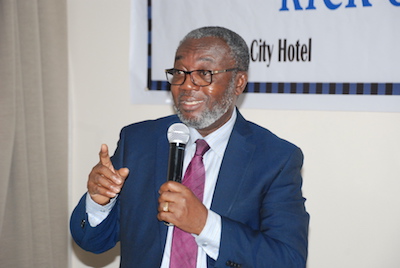
The Ashanti Region recorded an increase in maternal deaths in 2018 from 162 in 2017 to 221 in 2018, the Regional Health Director, Dr Emmanuel Tenkorang has disclosed.
According to the regional health director, there was an increase in institutional maternal mortality rate such that, out of 100,000 cases, the region recorded 139 deaths in 2017, while in 2018, the region recorded 184 deaths out of 100,000 cases.
Similarly, Dr Tenkorang indicated that, the number of audited maternal deaths in the region increased from 143, representing 88.3 per cent in 2017 to 212, representing 95.9 per cent in 2018.
Speaking at the 2018 Annual Performance Review Conference, under the theme, “Strengthening health system to improve maternal and new born health,” Dr Tenkorang explained that, the major causes of the increase in maternal deaths were haemorrhage, eclampsia and anemia in pregnancy.
He noted that, antenatal care coverage in the region reduced in the year under review from 72.9 per cent in 2017 to 69.1 per cent.
Touching on birth control in the region, Dr Tenkorang revealed that, there was also a decrease in family planning acceptance rate from 25.8 per cent in 2017 to 25.0 per cent in 2018 with couple year protection decreasing from 479,496.3 to 393,016.6 as depo provera was the most preferred method by patients and female condom the least preferred method.
In the area of HIV prevention of mother to child transmission, he said 142,406 pregnant women were tested for HIV in 2018 and only 2,186 were put on anti retro viral drugs, he said
In spite of the unflattering report, Dr Tenkorang said the region made some progress in the area of neonatal mortality, where there was a drop in institutional neonatal mortality from 13.6 per 1000 live births in 2017 to 9.3 per 1000 live births in 2018 as stillbirth reduced from 1.5 per 100 live births in 2017 to 1.4 per 1000 during the year under review.
There was an increase in malaria disease as a total of 783,135 malaria cases out of the 1,009,337 reported cases were confirmed positive in 2018 as against the 895, 088 overall cases reported in 2017.
According to Dr Tenkorang, the major challenges facing the region included, large numbers of uncompleted health infrastructure, inadequate and improper distribution of critical staff, especially in the deprived districts.
Others included delayed reimbursement of the National Health Authority claims, inadequate funding for public health intervention and high maternal and newborn deaths, which the region was planning to put in necessary intervention and advocate funding to address them.
The Director General of the Ghana Health Service (GHS), Dr Anthony Nsiah-Asare, promised the GHS would get financial clearance for the recruitment of more than 20,000 nurses to help with healthcare delivery.
He assured that, four out of six major health facilities in the region would be completed to ease congestion in existing health facilities in the region and also to accommodate more health workers.
Dr Nsiah-Asare indicated that, all other efforts by the GHS under the Health Centre Development Plan was to transition health centres from the Millennium Development Goals to achieving Sustainable Development Goals and also to achieve universal health coverage.
FROM FAUSTINA KWABEA OSEI, KUMASI







